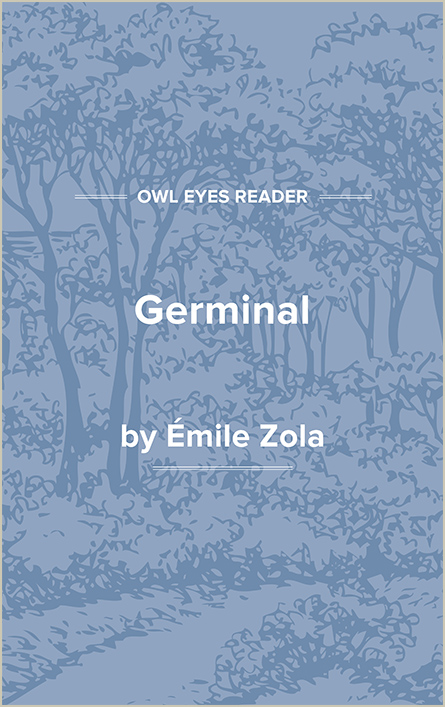Study Guide
Émile Zola Biography
Émile-Edouard-Charles-Antoine Zola was born in Paris on April 2, 1840. His father, Francesco Antonio Zolla, the son of a Venetian family, came to Paris in 1830 seeking work as a civil engineer. After submitting a series of projects to the French government, he was received by King Louis Philippe, who accepted his proposal for the port of Marseilles. During his stay in Paris, François Zola (as he had then become) met Émilie-Aurélie Aubert, the daughter of a housepainter, Louis-Auguste Aubert. She was born in northern France, in Dourdan, near the great plain of the Beauce, and she was twenty-four years younger than François when they married in 1839.
Although Zola was born in Paris, his family moved south before he was one year old. After reaching an agreement with the city for an aqueduct, canal, and dam system to supply water to Aix, Zola’s father seemed to have settled at last into a financially secure position. Unfortunately, he died of pleurisy in 1847, leaving his wife and seven-year-old son to manage as best they could in increasingly difficult circumstances.
Zola grew up, an only child doted on by his mother and her parents, living in working-class neighborhoods. He attended the Pension Notre-Dame and entered the Collège Bourbon at the age of twelve. It was here that he began his friendship with Paul Cézanne . Together with Jean-Baptistin Baille, they roamed the Provence countryside. Like Cézanne, Zola was never to lose his emotional attachment to Aix-en-Provence.
When his grandmother died in 1858, his mother moved the small household to Paris, where Zola was enrolled in the Lycée Saint-Louis. Homesick and somewhat behind his classmates, Zola did not do well and eventually failed his baccalaureate examinations. This failure prevented him from continuing to study for a profession. Thus he found himself at the age of nineteen, jobless and without professional qualifications, but determined to work by day and seek literary glory by night.
His first job was as a customs clerk, but in 1862 he became a clerk at the publishing firm of Hachette, eventually becoming head of the publicity department. This was the perfect place for him to meet publishers, authors, and critics. In 1864, his first book, the romantic Contes à Ninon (Stories for Ninon, 1895), appeared. After the publication of his second work, La Confession de Claude (1865; Claude’s Confession, 1882), had attracted the attention of the public prosecutor, the Hachette publishing company gave Zola the choice of giving up his literary career or leaving his position at the publishing house. Thus, in 1866, Zola became a journalist, writing book reviews and literary news for L’Événement. It was through his newspaper columns that he also took up the defense of the Impressionist painters against the artistic establishment.
During those years when he was developing a reputation as a critic and writer, Zola was also setting up his own household. In 1864, Cézanne had introduced him to Gabrielle-Eléonore-Alexandrine Meley. Her background has remained something of a mystery, but it is known that her parents were not married and that her mother, who may have been a florist, died when she was ten. According to some, Gabrielle was a laundress when she met Zola; others believe that she, too, was a florist. In any case, they moved together in 1866 to an address near the Théâtre de l’Odéon. They were married in 1870, having earlier moved to a new apartment with Madame Zola. It is thought to have been Zola’s mother who rechristened Gabrielle by her more properly middle-class name, Alexandrine.
The year 1867 marks the publication of Thérèse Raquin , Zola’s first naturalist novel, in which he studied the effects of murderous passion and guilt on his two main characters. By this time, Zola’s career as a journalist was established, and he was preparing to begin his twenty-novel cycle about the Rougon-Macquart family, set during the Second Empire. In preparation, he studied...
(The entire page is 1,520 words.)
Owl Eyes subscribers get unlimited access to our expert annotations, analyses, and study guides on your favorite texts. Master the classics for less than $5/month!

